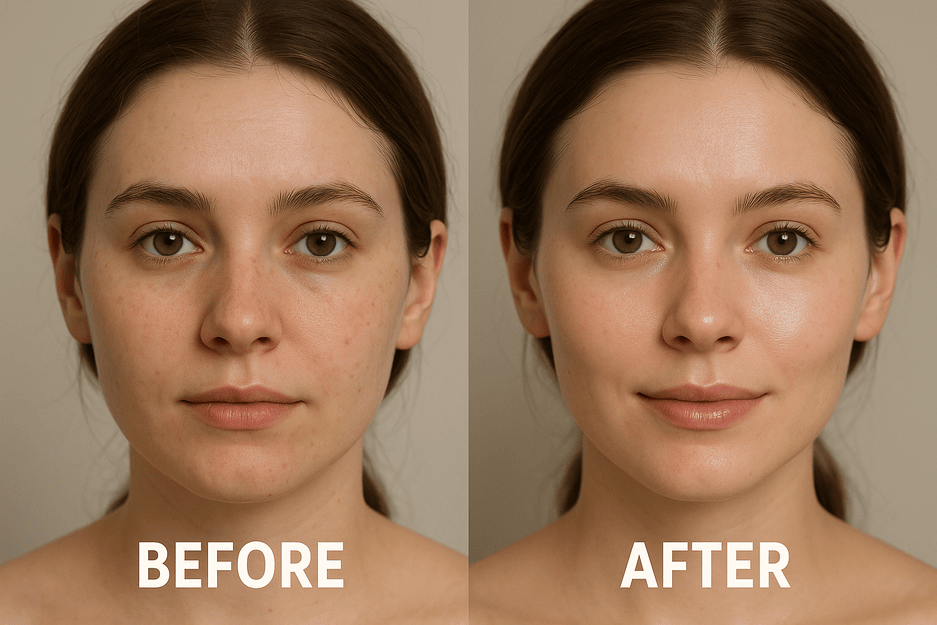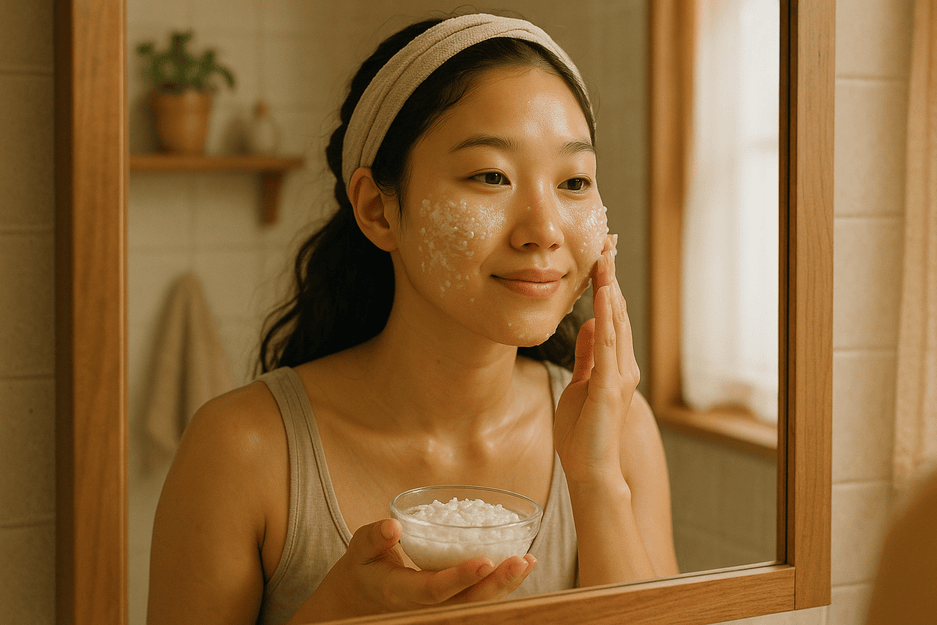Korean homemade masks for glass skin offer natural hydration, clarity, and smoothness. Discover the best DIY mask recipes and tips for radiant, flawless skin.
What Is Glass Skin?
Glass skin is a Korean beauty term that describes skin so luminous, smooth, and poreless that it resembles glass. It’s not just about looking hydrated—it’s about radiating health from within. Glass skin reflects light effortlessly and looks naturally dewy and clear.
Korean Definition of Glass Skin
In Korean skincare culture, healthy skin takes precedence over makeup. Glass skin results from consistent hydration, nourishment, and a gentle skincare routine. It symbolizes youth, health, and overall wellness.
Visible Characteristics of Glass Skin
- Spotless, blemish-free complexion
- Deep hydration with long-lasting moisture
- Minimal to invisible pores
- Smooth, even texture
- Radiant and glowing from within

The Role of Skincare in Korean Beauty Culture
Skincare in Korea isn’t just a routine—it’s a ritual and a lifestyle. Koreans learn to prioritize skin health from a young age using natural remedies and multi-step routines.
Why Clear Skin Matters in Korea
In Korea, clear, glowing skin is seen as a mark of discipline and self-care. It’s culturally associated with success, elegance, and natural beauty.
Lifestyle Habits That Promote Healthy Skin
- Eating fresh vegetables and fruits
- Drinking green tea regularly
- Consistent sleep schedule
- Daily exercise
- Regular use of natural face masks
Benefits of Korean Homemade Masks for Glass Skin
Deep Natural Hydration
Most DIY Korean masks contain aloe vera, honey, and cucumber, which deeply hydrate the skin and lock in moisture.
Skin Brightening and Rejuvenation
Ingredients such as rice and yogurt help even skin tone, reduce dullness, and improve elasticity.
Pore Tightening and Oil Control
Green tea, turmeric, and rosewater naturally help minimize pores and balance sebum production, resulting in a smoother appearance.

Common Natural Ingredients in Korean Homemade Masks
Ingredient Key Benefits
| Aloe Vera | Soothes irritation and hydrates deeply |
| Honey | Antibacterial and deeply moisturizing |
| Yogurt | Gentle exfoliant and brightening agent |
| Rice | Lightens spots and enhances clarity |
| Green Tea | Fights inflammation and reduces oil |
| Cucumber | Instantly cools and rehydrates skin |
Top 5 DIY Korean Masks for Glass Skin
1. Rice & Milk Brightening Mask
- 2 tablespoons cooked rice
- 1 tablespoon milk
- Mash and blend
- Apply for 15 minutes and rinse with lukewarm water

2. Aloe Vera & Honey Soothing Mask
- 2 tablespoons fresh aloe vera gel
- 1 teaspoon honey
- Mix well, apply for 20 minutes at night
3. Yogurt & Turmeric Softening Mask
- 2 tablespoons plain yogurt
- ½ teaspoon turmeric
- Brightens and calms dull or uneven skin
4. Cucumber & Rosewater Hydration Mask
- ½ grated cucumber
- 1 tablespoon rosewater
- Perfect for a cooling summer refresh
5. Green Tea & Oatmeal Detox Mask
- 1 brewed green tea bag
- 1 tablespoon oat flour
- Ideal for oily and acne-prone skin
How to Properly Use Homemade Masks
When to Use in Your Skincare Routine
The best time to use a face mask is in the evening before bed, when the skin is in recovery mode. This enhances absorption and effectiveness.
Recommended Frequency
- Hydrating masks: 2–3 times per week
- Brightening or exfoliating masks: 1–2 times per week
- Sensitive skin: Once a week with patch testing
Pre and Post-Mask Tips
- Always cleanse your face before applying any mask
- Moisturize after masking to seal in benefits
- Avoid applying near the eyes.
Homemade Masks vs. Store-Bought Masks: A Comparison
| Aspect | Homemade Masks | Commercial Masks |
| Ingredients | Natural and accessible | May contain chemicals or preservatives |
| Cost | Very affordable | Can be expensive |
| Results | Gradual but lasting | Fast but sometimes temporary |
| Storage | Short shelf life | Long shelf life |
| Risk of Reaction | Low if patch tested | Varies based on skin type |
Korean Users’ Experience with Natural DIY Masks
Many Korean skincare enthusiasts praise the long-term results of DIY masks. From brightened complexions to reduced acne scars, users report steady improvements when they incorporate natural masks into their weekly routine.
That said, a few users caution against using strong ingredients like lemon juice or turmeric without proper testing, as they may irritate sensitive skin.
Common Mistakes When Using DIY Korean Masks
- Not patch-testing ingredients first
- Overusing masks or applying them daily
- Mixing ingredients with conflicting properties
- Leaving masks on too long
- Using on broken or inflamed skin
Best Homemade Masks for Each Skin Type
Dry Skin
- Avocado & honey mask
- Milk & oatmeal mask
Oily Skin
- Green tea & clay mask
- Lemon & yogurt mask (use with caution)
Sensitive or Combination Skin
- Cucumber & rosewater mask
- Aloe vera & almond oil mask
Frequently Asked Questions
1. Can I use these masks daily?
No, 2–3 times per week is ideal. Overuse can lead to irritation.
2. Are they suitable for acne-prone skin?
Yes, especially masks with green tea, aloe vera, or cucumber. Always patch test.
3. What’s the best time to apply these masks?
Evening or night, when your skin is relaxed and more receptive.
4. Do they help achieve glass skin?
Yes, when used consistently as part of a balanced skincare routine.
5. Are DIY masks as effective as store-bought ones?
Yes, although slower-acting, they offer natural and lasting results.
6. How long do the effects last?
Depending on your skin and routine, results may last a few days.
Conclusion: Are Korean Homemade Masks the Secret to Glass Skin?
Absolutely! Korean homemade masks offer a natural, budget-friendly, and effective path to achieving glass skin. Using simple, natural stuff like rice, green tea, and aloe vera can totally level up your skin—making it smoother, glowier, and super hydrated. The secret is staying consistent, treating your skin gently, and knowing what works best for your unique skin type.


